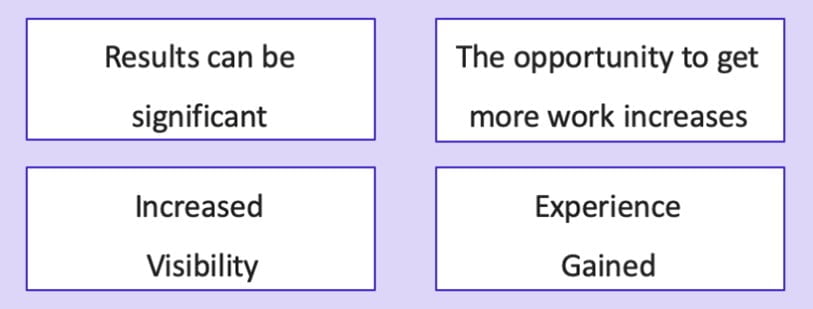How do you win a government tender? Winning tenders is a great way to expand your business and gain reputable large clients, as many large companies and most Government departments look to buy products and services through the process of tenders annually. Learning how the tender process works, particularly when it comes to registering for Government tenders is important as these tips may just be the tipping point that helps you secure that tender.
Watch the video at the bottom of the page for more in-depth information.
What is a Government Tender?
A Government Tender is a formal offer to perform work in return for a payment for either a fixed price or a schedule of rates. Work may include the supply of goods or services, or both. To win a tender, it is important to understand the tendering process and the buyer’s expectations.
Buyers are the organisations who publish tenders and are looking for responses from businesses who can do the work. They do this through a variety of tender requests types such as a Request for Tender (RFT). Suppliers are the individuals or businesses that offer their goods and/or services for the buyers.
The response is often referred to as Response to Tender and the organisation responding to the tender request is the supplier, or tenderer. The acceptance of a tender typically results in a contract between the buyer and the supplier. This process is referred to as tendering.
Did you know that Government tenders alone are published on over 500 websites and in 300 newspapers across the country? More than 20,000 are published annually!
Types of Tender Acronyms
Each year in Australia, more than 20,000 requests for tenders are published online through various online websites and platforms and in newspapers. It is estimated that government tenders market alone is worth more than $30 billion annually.
Types of Tender Requests
RFT, ATM, ITO, What the…? Tender requests come in many shapes, forms and sizes and may include the following:
- Request for Tender (RFT)
- Approach to Market (ATM)
- Request for Proposals (RFP)
- Invitation to Offer (ITO)
- Invitation to Respond (ITR)
- Request for Quote (RFQ)
Request for Expressions of Interest (EOI) are not typically tender requests but are the often the first step in the tendering process.
Oh and we can’t forget the BAFO, which we learnt about after being successfully shortlisted, a BAFO, refers to the Best and Final Offer which gives you an opportunity to make a last bid (most commonly done by all shortlisted tenderers) with the chance to hopefully secure the tender.
Why Tenders are Challenging for Small Businesses
Despite some efforts to make the tender process more appetising and simpler for small businesses, it hasn’t improved for many years now. In fact, it has become more difficult for small businesses to secure. Why? For many reasons, including but not limited to:
- They are often poorly written, with lots of parts brought together in a way that is hard to understand if not familiar with the organisation/department.
- Personalised forms, where you are expected to complete forms in a very specific format based on the buyers personal preferences.
- Information is too high level, and hard to understand due to the limited information shared.
- Accounting and legal requirements, are more often than not requested with Big Business in mind with sometimes seemingly challenging requests like insurance expectations.
- Ultimately tenders mostly favour bigger consultancies who have the time, money, and resources to fill them out.
There are a series of hurdles you need to overcome just to respond, and information that you are asked for can be very complicated, high-level and unclear. For example, one tender that AMO had the chance to submit for advised that a mandatory requirement was to include that buyer as a claimant on our insurance policy. We asked around and found that it was quite unusual especially the way it was written as it would entitle them to claim against our policy
As a small business, we have been fortunate to apply for and win many tenders. Though the process to register and respond can be very challenging. The challenges don’t stop; they keep coming! So, is it worth the trouble, or is it a waste of time? AMO has been accepted and rejected numerous times.
For example, AMO once lost a tender because the buyer stated we had estimated too many resources in our proposal, yet they gave absolutely no overview of the size of the program portfolio, how many resources they had or how big the budgets were that were to be managed. It was a guessing game. Often after short Q&A opportunities, you get no other opportunity to respond to their feedback, explain or provide a BAFO!
Why Winning a Government Tender Will Help your Business

The results are significant if you catch a good tender, in fact some tenders AMO has secured have covered the cost of our team for months at a time. The opportunity to get more work this way increases as you become registered with the department or organisation and as you prove yourself as a quality supplier with expert resources who deliver on time and on budget, which we are proud to say we have done so for all our engagements so far. So, how do you increase your chances?
How to Increase your Chances of Winning a Government Tender
- Dates are critical – check them, and then check them again as these are not negotiable
- Always respond exactly as the buyer specifies as they often have to go through dozens of responses and will deem you non comforting if you don’t meet their requirements
- No jargon / acronyms in your responses, this is a no brainer
- Do not assume they know you, your business or your process. In fact, do not assume anything
- Always respond in full. If they request 500 words, write 500 words, not 50 or 5000
- Ask your references (which are almost always required) upfront so it’s not a surprise if they get called and they will get called
- Where the opportunity arises, demonstrate value add by including more about how you provide this, for example we specific our proprietary AMO Method as a value add
- Leverage past applications or past submissions you have created so you don’t have to reinvent the wheel
- Learn from past mistakes, listen to the feedback provided and use these lessons to improve the process and your responses moving forward
- Create a template of key information and save yourself time when applying in future. Programs like Airtable and Excel are useful for storing information in a structured way
Driving the Creation of a Tender
- The process to manage it should be as straightforward as:
- Identifying your suitability
- Download the documentation and identifying all the dates and recording these in your task management system
- Transposing all the requirements into an editable template or excel spreadsheet so you can track against the requirements as you build it
- Collect / create content required of the tender, always referring back to the requirements sheet
- Then proceed through the internal review process, and cross checking everything before finalising your formatting
- Note – with government tenders, content is king!
Where you can Find Tenders
To track and obtain all tender information you can do in a variety of ways including through the following sources:
- www.australiantenders.com.au
- www.tenders.gov.au
- www.tenders.vic.gov.au
- www.vendorpanel.com.au
Key Takeaways
When taking all of this into account, AMO has been able to secure more tenders, speed up the application process, leverage past mistakes and lessons and improve our success rate. There is a lot to learn when it comes to securing tenders and although it’s hard work, government tenders certainly pay off if you can secure one. It just takes patience, persistence, and a clear approach to planning and responding that you can continuously improve as you move forward.
How AMO can help you:
- Coaching your team in all things governance, agile and project management.
- Running practical workshops.
- Recruit experts for your business.
- Help you build efficient project management processes or improve the way your projects perform.
- Help you become more agile.
For more information, email contact@agilemanagementoffice.com
Source: https://info.australiantenders.com.au/blog/what-is-a-tender
